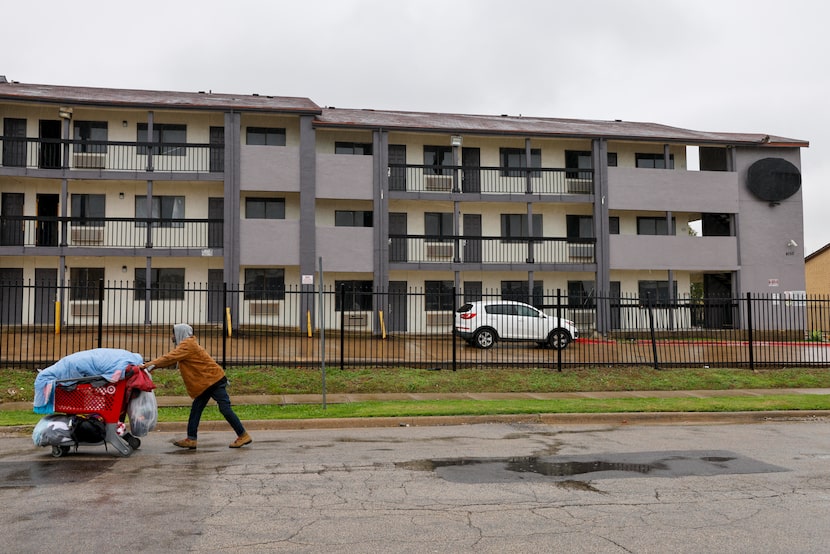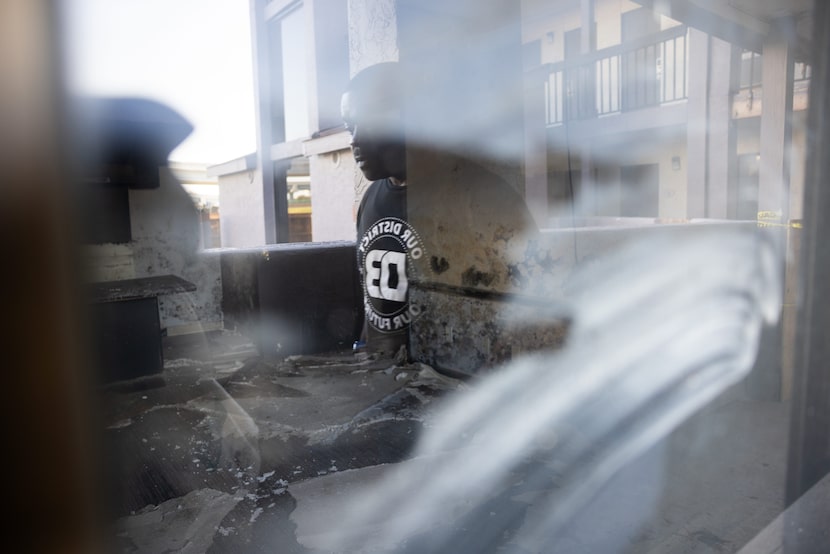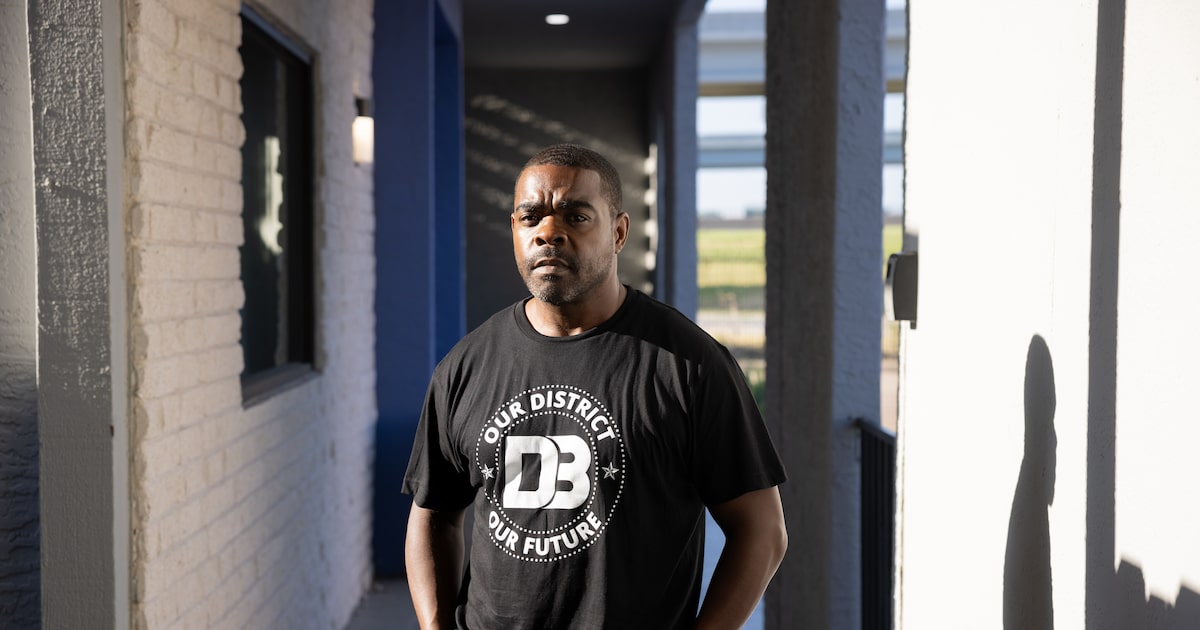When the year began, the future of the former extended stay motel on Independence Drive, a site tapped to be one of Dallas’ solutions to tackle homelessness, appeared bleak.
No developer had shown any interest in redeveloping the site. The projected cost of demolishing the Townhouse Suites and building a new facility, over $25 million per a February briefing, far surpassed the bond dollars reserved for the site.
But council member Zarin Gracey, whose district encompasses the property, has a plan.
Gracey wants to utilize the public facility corporation, an economic development tool that allows developers to get a complete property tax exemption for 75 years in exchange for building mixed-income housing, where just under half of the units are reserved for people who make no more than 80% of the area median income. A small sliver — about 10% — is set aside for those who make less than 60% of the area median income.
Political Points
The model has received extensive scrutiny in the past year. Critics of the program worry the city loses critical tax dollars for decades, and the model does not address the needs of residents in the most dire situation: Those who make less than 50% of the area’s median income. They have now called for an overhaul of the system. Others say that the program works and have pointed out tools such as the public facility corporation and the housing finance corporation accounted for 73% of the city’s affordable housing stock in 2023.
Gracey, once the president of the public facility corporation, said the debates were his starting point.
“The city gets no revenue from this property anyway,” Gracey said. By shifting to the public facility model, the District 3 council member hopes the measure could resuscitate the motel and grow housing while simultaneously elevating the lives of its neighbors.
The surrounding area has other motels, such as the Royal Inn and the Super 7 Inn Dallas, where several families with young children and aging grandparents live paycheck to paycheck, Gracey said.
Several such residents fell into homelessness when city officials purchased the Townhouse Suites in 2022. City leaders hoped a developer would come in, rehab the space and help build a facility that would house residents without a roof over their heads, offering services such as mental health and job support in the quest for stability.
In the process of buying the property, the city evicted the existing tenants of the motel, who themselves lived on the edge of homelessness. Three years later, the site sits closed, languishing in inactivity.
Gracey has not forgotten about those displaced residents. “I’ve wanted nothing more than to get something established, to get those folks back in it,” he said.

The exterior of the City of Dallas owned and former TownHouse Suites at 4150 Independence Drive, Thursday, Nov. 9, 2023, in Dallas.
Elías Valverde II / Staff Photographer
The vision for affordable housing
Dallas officials have been open to Gracey’s idea.
“The city is exploring all options to support redevelopment of this site,” said Thor Erickson, director of the city’s new office of housing and community empowerment, in a statement to The Dallas Morning News.
Keith Pomykal, president of the public facility corporation, said while no plans were set in stone, one developer had thrown their hat in the ring last week, and a second developer expressed interest. Pomkyal expects more details by the nonprofit corporation’s Nov. 25 meeting.
Earlier this year, city officials told council members several developers were hesitant about revamping the space, citing unknown costs and hidden infrastructure issues in the dilapidated section of the building.

Council member Zarin Gracey is reflected in the window as he walks by a room of the former extended-stay hotel at 4150 Independence Dr in Dallas on Thursday, Oct. 9, 2025. Gracey said he would like to redevelop the property to serve and provide housing to residents experiencing homelessness.
Juan Figueroa / Staff Photographer
City officials also uncovered a leak in water pipes and deteriorated structures. In May, city officials floated another idea: a new fire station. But council members remained unconvinced.
Gracey said developers want a “clean slate.” In this case, it means demolition, and it’s not clear whether his colleagues would be on board. Another bone of contention may also be whether his plan successfully fulfils a citywide goal to build more permanent supportive housing — intervention combining affordable housing with additional services, such as job support, rental help and behavioral services.
The council member, now in his second term, wants to stay the course. Support for his plans has come from long-time community members who have described the government’s treatment of their neighborhoods as an afterthought.
In September, leaders of the council’s housing and homelessness solutions committee invited Gracey for a closed meeting to discuss a proposal to move The Bridge, a homeless services provider, out of downtown Dallas and into his district at Dallas Executive Airport.
“It was so stunning in its senselessness. It really activated the community,” said Anga Sanders, founder of Feed Oak Cliff, an organization that seeks to bring quality amenities to the region.
Sanders said the city, which has traditionally turned to solutions without community involvement, said officials would find more success in reducing overall homelessness if Dallas finds ways to keep people from falling into it in the first place.
She mentioned the residents who were evicted when the city bought the extended-stay motel. “They created some homeless people out there,” she said.
If Gracey’s plan works, then it is possible that the cost-burdened tenants in the area could find a new home.
“We’re all just one disaster away from falling into homelessness just depends on the size of the disaster,” Sanders said. “It’s the mythological beast that has nine heads,” Sanders said about homelessness. “You cut one head off and another one grows.”
Raymond Crawford, a resident who opposed the Hampton Road facility, said the city could take inspiration from what the Salvation Army of North Texas did in creating a 21-acre campus in the Stemmons Corridor to serve residents in search of addiction recovery and provide resources that matched the needs of the different kinds of ways people fall into harder times.
“It lets them serve the homeless without disturbing surrounding neighborhoods,” Crawford said.
The Salvation Army already partners with the city for various programs, such as providing shelter during inclement weather. Creating similar permanent supportive housing was part of the city’s plan when officials purchased another property in Gracey’s district, a former hospital on 2929 S. Hampton Road.
But their move caught community members off guard. The former hospital was near an elementary school, a park and a neighborhood, and residents weren’t notified. For years, they pushed back, citing the city’s tendency to treat southern Dallas as a dumping ground.
They prevailed this year when the city ended plans to build the facility and put the building up for sale. Gracey says he wants to use the proceeds from the sale to refurbish the Independence Drive property, but there’s no guarantee whether that is possible.
In City Hall, Gracey has been at the center of robust debate, and much of it is on whether the city’s expenses at the Independence Drive property have been all for naught.
One October morning, Gracey pointed at the community center attached to the building. This was the site the city had poured hundreds of thousands of dollars into and renovated. Prior to that, officials paid $5 million in bond dollars to purchase the property itself.
“Oh, that looks good,” Gracey said as he walked down a corridor adjacent to the community center. Through glass windows, which starkly contrasted the broken railings, shuttered rooms and layers of dust in the rest of the building, one could see new furniture. Tables and chairs made up a community space that gave insight into what could’ve been.
Gracey said he understands the mandate to solve homelessness is city-wide.
“One size doesn’t fit all,” he said. “It’s knowing your community and knowing what the need is for them.”

